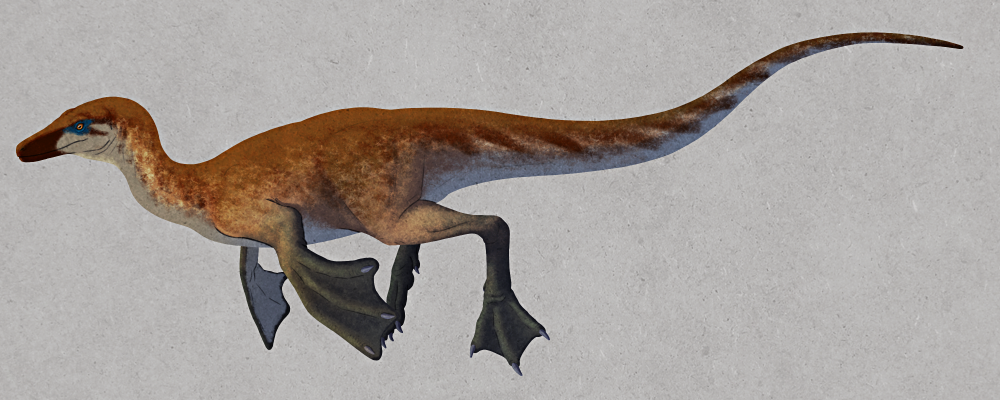First discovered in the 1850s, Compsognathus longipes was the first theropod dinosaur known from a fairly complete skeleton, and also the smallest known non-avian dinosaur for over 130 years.
(A second specimen was also, briefly, the “first” aquatic non-avian dinosaur, but that’s another story.)
Living in what is now Europe during the late Jurassic, about 150 million years ago, it was a lightly built animal with long legs and a long tail, growing to around 1.2m long (~4′). Its hands seem to have had only two functional fingers, with the third being vestigial and possibly not even having a claw.
Skin impressions from about a third of the way along its tail show small bumpy scales – but since other compsognathids like Sinosauropteryx are known to have been covered in fur-like feathers, this likely means that just that particular region of Compsognathus’ body wasn’t fluffy.
Some of Compsognathus‘ diet is known for certain, since preserved gut contents show it fed on smaller vertebrates like lizards and rhynchocephalians. The remains of a lizard in the stomach of one specimen were even identified as belonging to a previously-unknown species, Schoenesmahl dyspepsia, with the dismembered nature of the skeleton suggesting Compsognathus tore its prey into bite-sized chunks in a similar manner to modern predatory birds.
Continue reading “Compsognathus”


